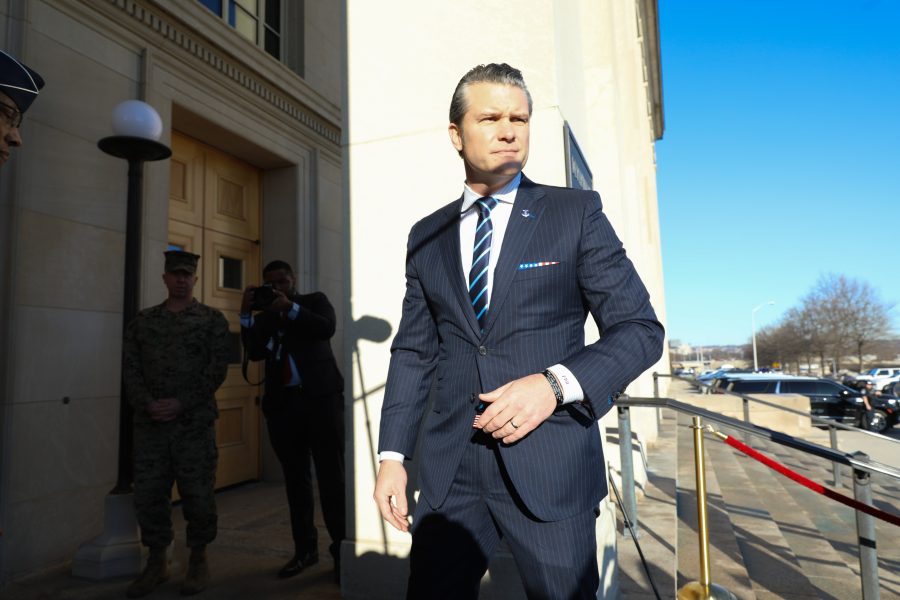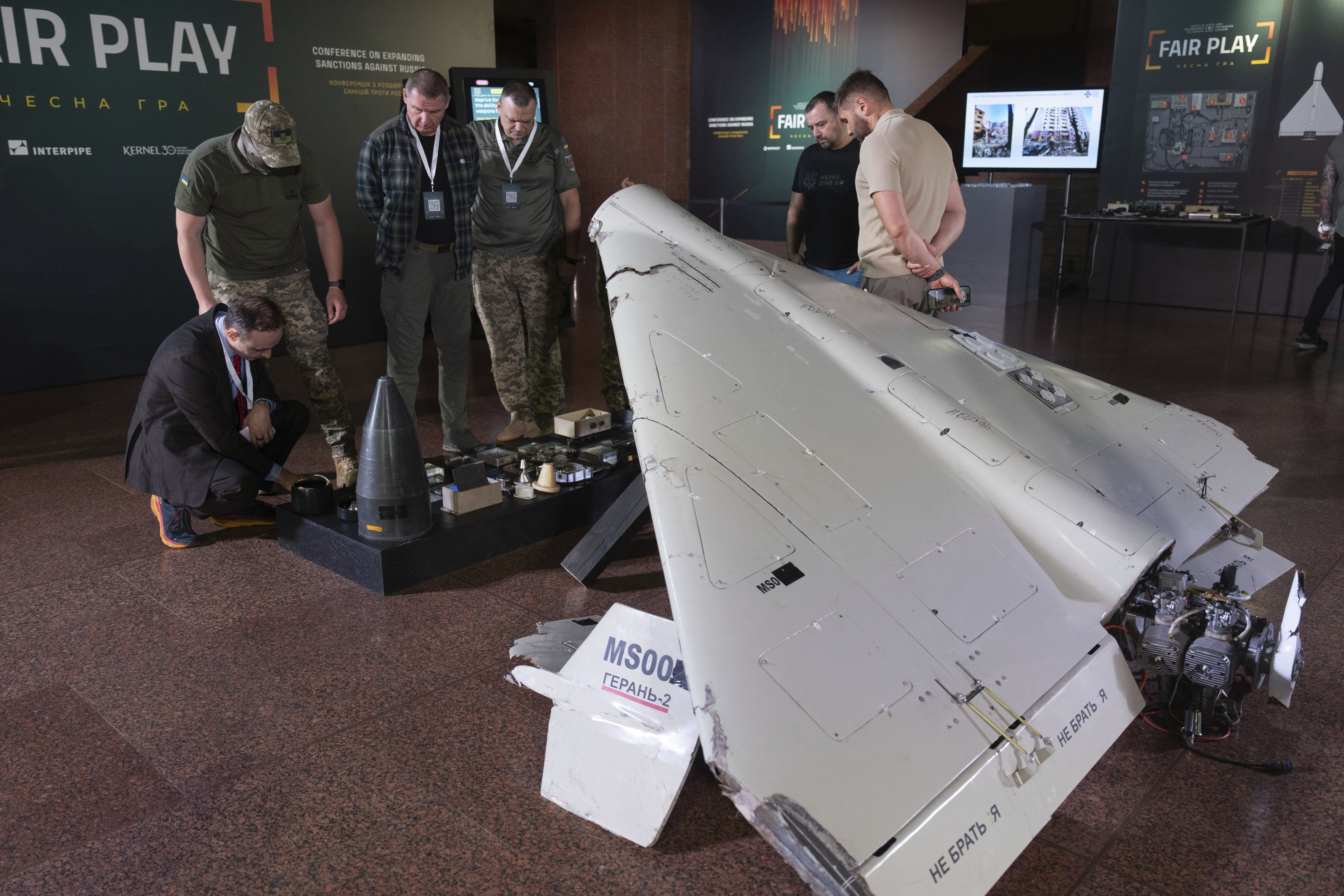
Defense Secretary Pete Hegseth’s plan to drastically reduce the staff and budget of the Director of Operational Test and Evaluation could accelerate weapons fielding, but at the risk of removing the critical independent oversight of an independent Pentagon agency, former senior defense officials said.
Hegseth’s May 28 downsizing order said the Office of the DOT&E performed “redundant, nonessential, non-statutory functions . . . that do not support agility or resource efficiency.” Following a “comprehensive internal review,” he concluded that the agency is a drag on “our ability to rapidly and effectively deploy the best systems to the warfighter,” he wrote.
He ordered the DOT&E staff slashed by more than half, from about 94 total to 46, leaving 30 civilians, 15 uniformed personnel and one Senior Executive Service member. He also ordered the elimination of most contract staff, between 100 and 200 people. Those changes, Hegseth said, will save about $300 million per year. A large portion of a budget that–about $388.8 million–has been expended so far in fiscal 2025, according to the government’s USAspending.gov website.
All contractor support for DOT&E is to be ended by June 3, Hegseth wrote, “so the organization can return to a zero-based core mission.” A 60-day “acclimation period” will follow, after which the director can ask Deputy Defense Secretary Steve Feinberg for additional funds.
The Pentagon testing agency has spent much of its money on contracts with the Institute for Defense Analyses (IDA) and MITRE Corp., both federally funded research-and-development corporations, defense contractor CACI and academic institutions including the Massachusetts Institute of Technology.
In a release, the Pentagon said, “This decision eliminates redundancy in the defense acquisition system, returns DOT&E to its statutory intent as an oversight body, and empowers the Services and Combatant Commands with greater trust to ensure the warfighter is efficiently equipped to address emerging challenges and to preserve our decisive advantage.”
Greg Zacharias, who was chief scientist at DOT&E from 2018-2021, told Air & Space Forces Magazine that the cuts involve “maybe 250 testers who are the cream of the crop.” That engineering talent and expertise is vital to developing new weapons that work, he said.
“We’re looking at an 80 percent reduction in manpower, not to mention the churn in organizational roles,” added Zacharias, who also served as chief scientist of the Air Force from 2015-2018. “They will unquestionably fail at their mission.”
He and another former defense official suggested the motivating factor behind cutting the test enterprise is a desire to field new weapons programs like the Golden Dome missile defense system in a very short time.
“No testers, no failures,” Zacharias said. “How can a prime [contractor] lose in a multi-decade, multi-trillion dollar acquisition in that situation?”
Zacharias said DOT&E does “a lot of technical work . . . in terms of educating the test pilots and . . . Army and Navy command equivalents to bring in design expertise,” such as “how do you design a sample of flight tests . . . without breaking the budget?”
The organization “oversees that a test was designed correctly, was actually executed correctly, and then the analysis results are supported by the data,” he said. That includes developing test and evaluation master plans for every major program, a product that Zacharias said must be “iterated” many times to ensure that nothing important is left out.
Zacharias acknowledged that the office performs many “unstated functions” and “maybe that’s why the memo said ‘statutory designated functions,’” including “outreach for new testing technologies,” a job the services “don’t have the manpower to do.”
By ensuring systems work as advertised, the agency is supposed to prevent problems like the KC-46 aerial tanker’s Remote Viewing System, which has not performed as intended and required a substantial redesign.
William LaPlante, undersecretary of defense for acquisition and sustainment during the Biden administration, worried that cutting DOT&E will undermine oversight.
“You need that independent view,” he said. While the services have their own test organizations, DOT&E’s role in overseeing the design of test plans ensure neither the military services nor their contractors cut corners.
“You need to keep people honest,” LaPlante said. “You need to have DOT&E to tell you that you tested right. You may not get that from the program management, or the people that built it.”
“You need those checks and balances . . . a common interpretation of the facts,” he said. “DOT&E really pays attention, and people really pay attention to what they say.”
LaPlante called DOT&E “the hammer” that ensures the services test new systems thoroughly, because if they don’t, DOT&E will highlight the shortfalls in communications to Congress. DOT&E’s annual report on most major defense acquisition programs is closely watched and reviewed by Congress.
The Air Force Operational Test and Evaluation Center, which does the bulk of Air Force testing, may not “have the clout . . . if something needs work, to get it fixed,” LaPlante said.
“DOT&E puts out that annual report, the press picks it up, Congress pays attention to it,” he said. That holds everyone more accountable.
LaPlante said the expert contractors from IDA, MITRE, and others are highly valuable. “You need that expertise of knowing how to do test and evaluation of a complex weapon system,” he said. “These are people you can’t just grab off the street.” And as systems grow more complex, and the use of emerging technologies like artificial intelligence and highly complex software increase, the need for such experts will only grow.
One key role for the Office of the DOT&E is to advise the Joint Requirements Oversight Council, particularly on testing new technologies. The office was created in 1983 in the wake of problems with the Army’s Bradley Fighting Vehicle, for which a test program wasn’t fully developed until development was far along. The new vehicle couldn’t meet requirements for weight, water operations and the number of soldiers it could carry.
Former Air Force Secretary Frank Kendall agreed that formulating the Test & Evaluation Master Plan is among DOT&E’s “primary values.” But he also said “their scope expanded over the years and scaling it back might make some sense,” acknowledging that while the DOT&E “is value-added . . . it is burdensome.”
The contractor engineers bring “a lot of capability and talent,” he said; they have unique skills not readily available to other entities within the Office of the Secretary of Defense, and that he would have liked to have access to those capabilities when he was Undersecretary of Defense for Acquisition, Technology, and Logistics (AT&L) from 2012 to 2017.
“They’re seen as an honest broker on the Hill,” Kendall said. Their reports provide a counterpoint to the narrative provided by the services as to how well their programs are progressing, and while some might bristle at the level of detail in DOT&E reports, Congress is likely to push back on losing such a valuable check on the services.
LaPlante agreed: “DOT&E was viewed as a truth-teller,” he said.
Indeed, Sen. Jack Reed (D-R.I.), ranking member on the Senate Armed Services Committee, lashed out against the move. “Secretary Hegseth’s decision to gut the Pentagon’s Director of Operational Test and Evaluation office is reckless and damaging to military accountability and oversight,” Reed said in a release.
“For decades, DOT&E has played a vital, legally mandated role in safeguarding the integrity of major defense programs and ensuring military systems are effective before they are put into warfighters’ hands,” Reed said.
Reducing DOT&E to “a skeleton crew and limited contractor backing” means the agency cannot provide “adequate oversight for critical military programs, risking operational readiness and taxpayer dollars,” he said.
The post Cut to DOD’s Test Enterprise Alarms Critics, Fearing Loss of ‘Honest Broker’ appeared first on Air & Space Forces Magazine.

National Security, DOT&E, Frank Kendall, Greg Zacharias, Operational Test and Evaluation, Pete Hegseth, William LaPlante
Air & Space Forces Magazine
Bitcoin
Ethereum
Monero

Donate Bitcoin to The Bitstream
Scan the QR code or copy the address below into your wallet to send some Bitcoin to The Bitstream

Donate Ethereum to The Bitstream
Scan the QR code or copy the address below into your wallet to send some Ethereum to The Bitstream

Donate Monero to The Bitstream
Scan the QR code or copy the address below into your wallet to send some Monero to The Bitstream
Donate Via Wallets
Select a wallet to accept donation in ETH BNB BUSD etc..










